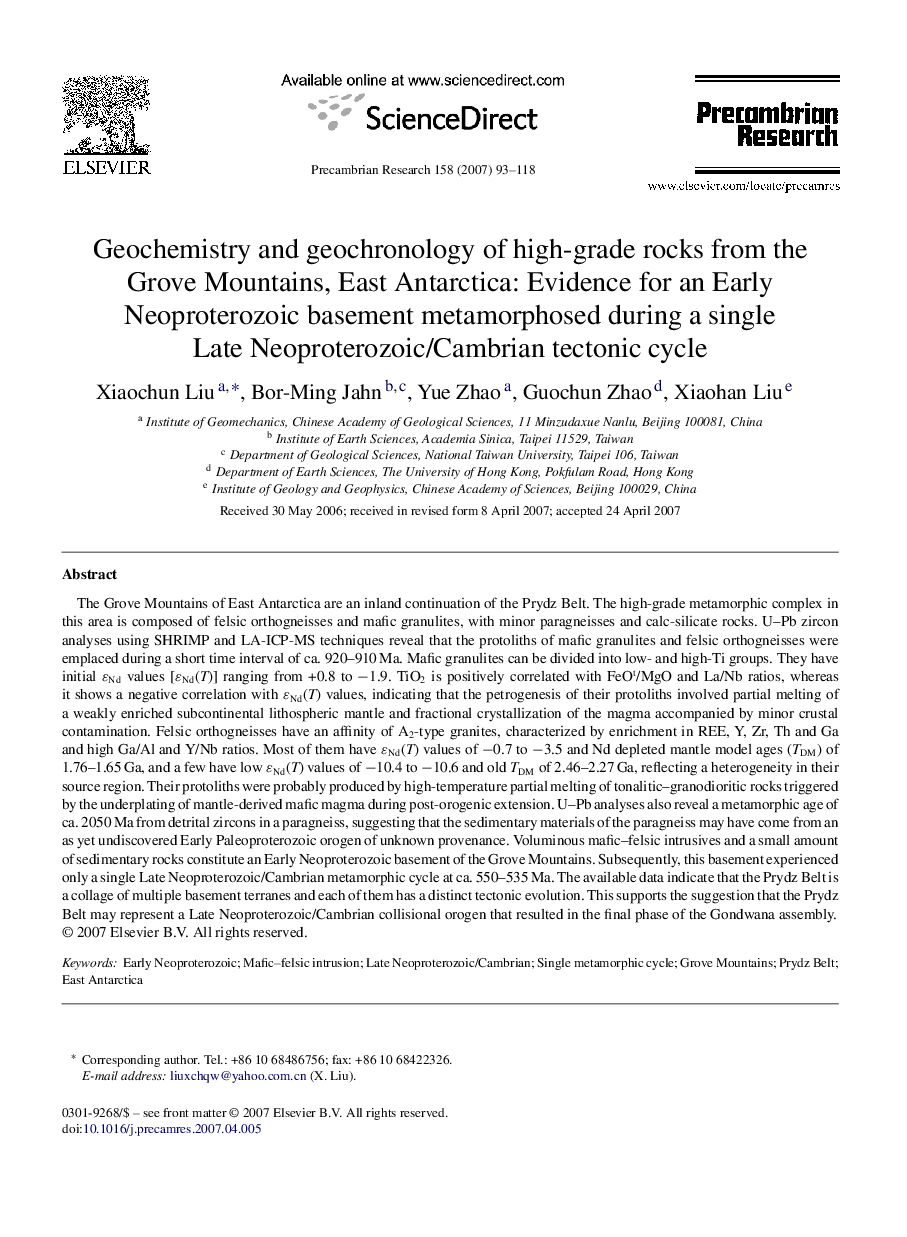| کد مقاله | کد نشریه | سال انتشار | مقاله انگلیسی | نسخه تمام متن |
|---|---|---|---|---|
| 4724471 | 1639714 | 2007 | 26 صفحه PDF | دانلود رایگان |

The Grove Mountains of East Antarctica are an inland continuation of the Prydz Belt. The high-grade metamorphic complex in this area is composed of felsic orthogneisses and mafic granulites, with minor paragneisses and calc-silicate rocks. U–Pb zircon analyses using SHRIMP and LA-ICP-MS techniques reveal that the protoliths of mafic granulites and felsic orthogneisses were emplaced during a short time interval of ca. 920–910 Ma. Mafic granulites can be divided into low- and high-Ti groups. They have initial ɛNd values [ɛNd(T)] ranging from +0.8 to −1.9. TiO2 is positively correlated with FeOt/MgO and La/Nb ratios, whereas it shows a negative correlation with ɛNd(T) values, indicating that the petrogenesis of their protoliths involved partial melting of a weakly enriched subcontinental lithospheric mantle and fractional crystallization of the magma accompanied by minor crustal contamination. Felsic orthogneisses have an affinity of A2-type granites, characterized by enrichment in REE, Y, Zr, Th and Ga and high Ga/Al and Y/Nb ratios. Most of them have ɛNd(T) values of −0.7 to −3.5 and Nd depleted mantle model ages (TDM) of 1.76–1.65 Ga, and a few have low ɛNd(T) values of −10.4 to −10.6 and old TDM of 2.46–2.27 Ga, reflecting a heterogeneity in their source region. Their protoliths were probably produced by high-temperature partial melting of tonalitic–granodioritic rocks triggered by the underplating of mantle-derived mafic magma during post-orogenic extension. U–Pb analyses also reveal a metamorphic age of ca. 2050 Ma from detrital zircons in a paragneiss, suggesting that the sedimentary materials of the paragneiss may have come from an as yet undiscovered Early Paleoproterozoic orogen of unknown provenance. Voluminous mafic–felsic intrusives and a small amount of sedimentary rocks constitute an Early Neoproterozoic basement of the Grove Mountains. Subsequently, this basement experienced only a single Late Neoproterozoic/Cambrian metamorphic cycle at ca. 550–535 Ma. The available data indicate that the Prydz Belt is a collage of multiple basement terranes and each of them has a distinct tectonic evolution. This supports the suggestion that the Prydz Belt may represent a Late Neoproterozoic/Cambrian collisional orogen that resulted in the final phase of the Gondwana assembly.
Journal: Precambrian Research - Volume 158, Issues 1–2, 15 September 2007, Pages 93–118